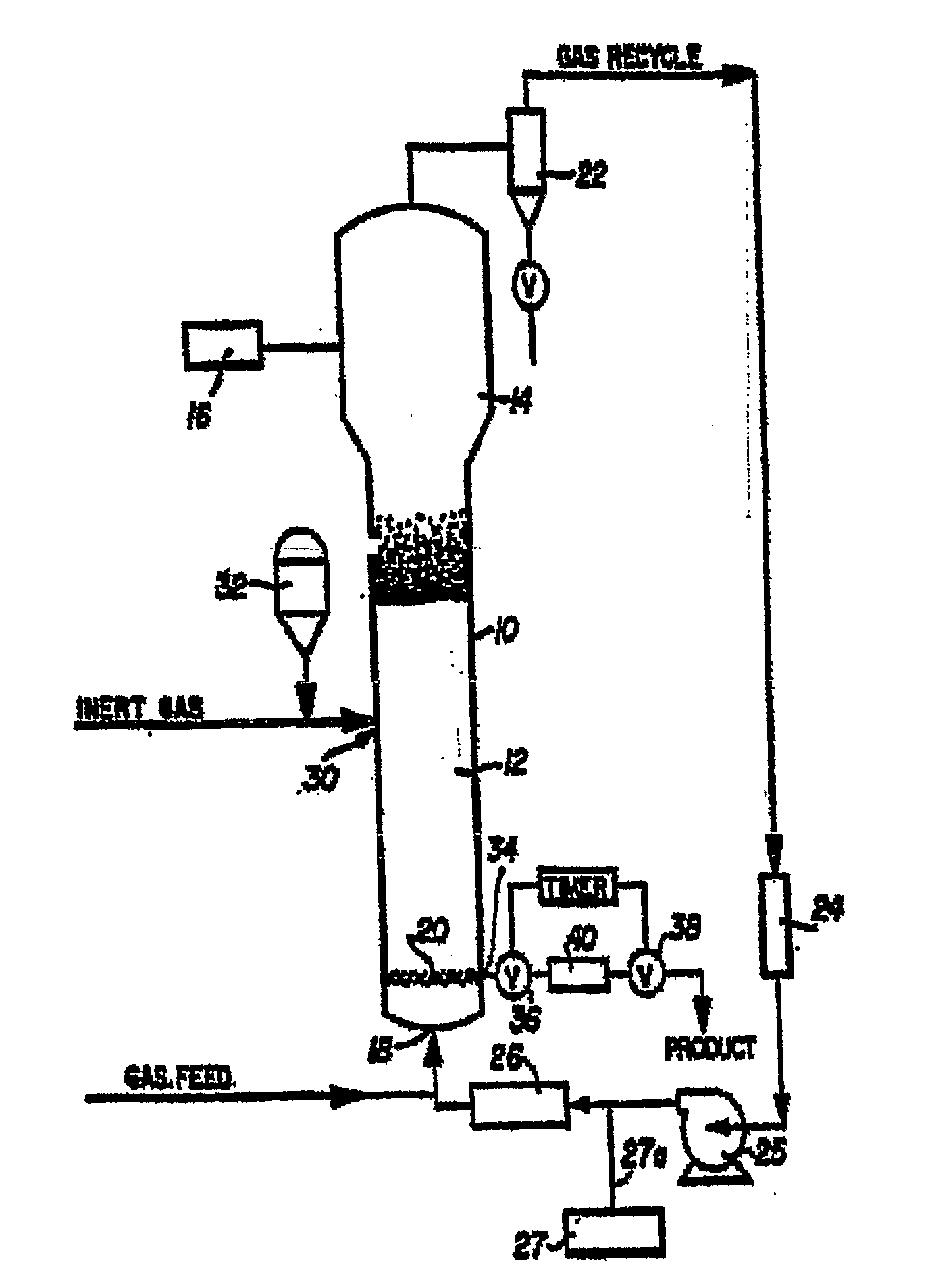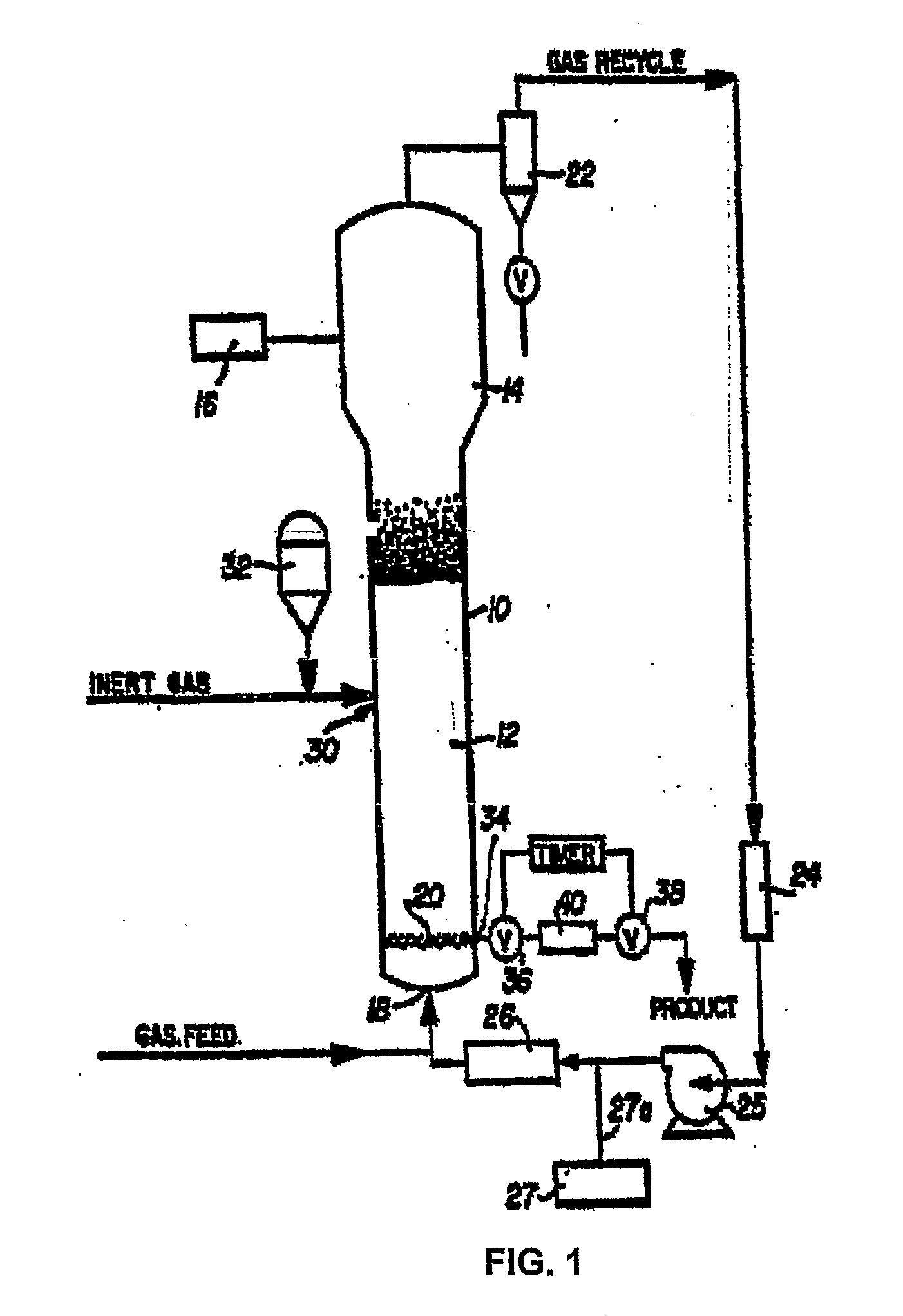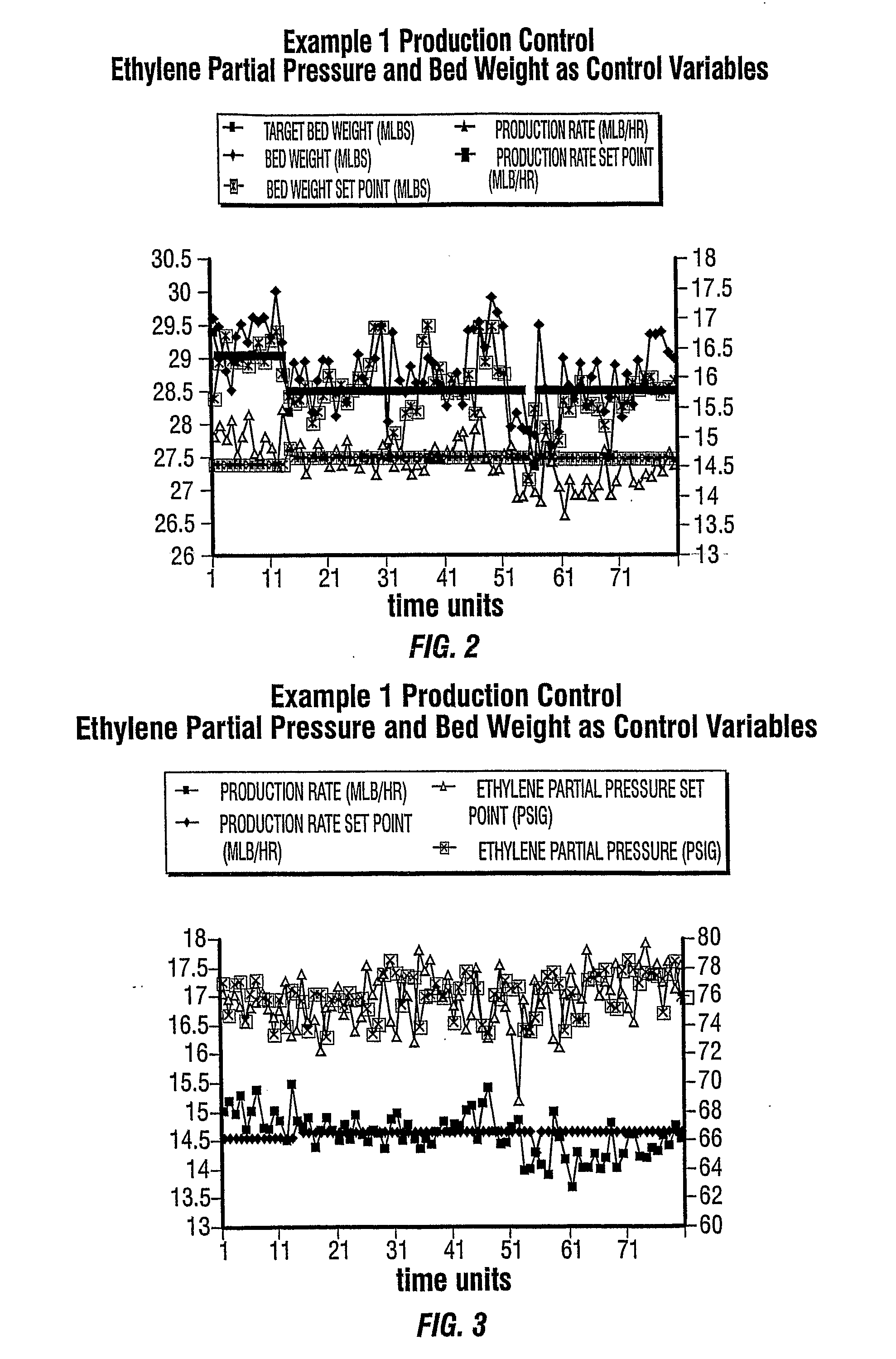Method Of Controlling A Polymerization Reactor
- Summary
- Abstract
- Description
- Claims
- Application Information
AI Technical Summary
Benefits of technology
Problems solved by technology
Method used
Image
Examples
example 1
[0079]FIGS. 2 and 3 represent data generated by the procedure described in this example which is carried out in a gas phase fluidized bed reactor using a Ziegler-Natta catalyst. Ethylene partial pressure and reactor bed weight are controlled through predictive computer models and coordinated control methods. The reactor is operated continuously within the following ranges:
[0080]Total reactor pressure: 19.8 to 21.0 bar absolute (289 to 273 psig)
[0081]Reactor bed temperature: 69.9 to 71.5 degrees C.
[0082]The alpha-olefins are propylene and ethylene. The gas composition, by weight, is 25.2 to 26.7 percent ethylene; 42.4 to 44.4 percent propylene; 3.30 to 3.70 percent hydrogen; balance: nitrogen, ethane, methane, propane.
[0083]In this particular example, the ethylene partial pressure limit is set from a low of 4.0 bar absolute to a high of 8.0 bar absolute. The target reactor bed weight operating point is set to 13,000 kilograms. The reactor bed weight limit is selected to be at minus 5...
example 2
[0089]FIGS. 3 and 4 represent data generated by the procedure described in this example which is carried out in a gas phase fluidized bed reactor. A metallocene catalyst is used in the process. Catalyst flow rate and ethylene partial pressure are controlled through predictive computer models and coordinated control methods. The reactor is operated continuously within the following ranges:
[0090]Total reactor pressure: 16.8 to 18.2 bar absolute (245 to 265 psig)
[0091]Reactor bed temperature: 75.0 to 85.0 degrees C.
[0092]The alpha-olefins are ethylene, hexene, and hydrogen. The gas composition, by weight, is 58 to 52.5 percent ethylene; 0.68 to 73 percent hexene; 278.0 to 302.0 part per million hydrogen; balance: nitrogen, ethane, methane, propane. Example 2 steps:
[0093]The catalyst feed limit is set to a low of 2.8 kilogram per hour to a high of 3.5 kilogram per hour. The ethylene partial pressure limit is selected to be at minus 0.14 bar-absolute to a plus 0.14 bar-absolute relative ...
PUM
| Property | Measurement | Unit |
|---|---|---|
| Fraction | aaaaa | aaaaa |
| Fraction | aaaaa | aaaaa |
| Time | aaaaa | aaaaa |
Abstract
Description
Claims
Application Information
 Login to View More
Login to View More - R&D
- Intellectual Property
- Life Sciences
- Materials
- Tech Scout
- Unparalleled Data Quality
- Higher Quality Content
- 60% Fewer Hallucinations
Browse by: Latest US Patents, China's latest patents, Technical Efficacy Thesaurus, Application Domain, Technology Topic, Popular Technical Reports.
© 2025 PatSnap. All rights reserved.Legal|Privacy policy|Modern Slavery Act Transparency Statement|Sitemap|About US| Contact US: help@patsnap.com



